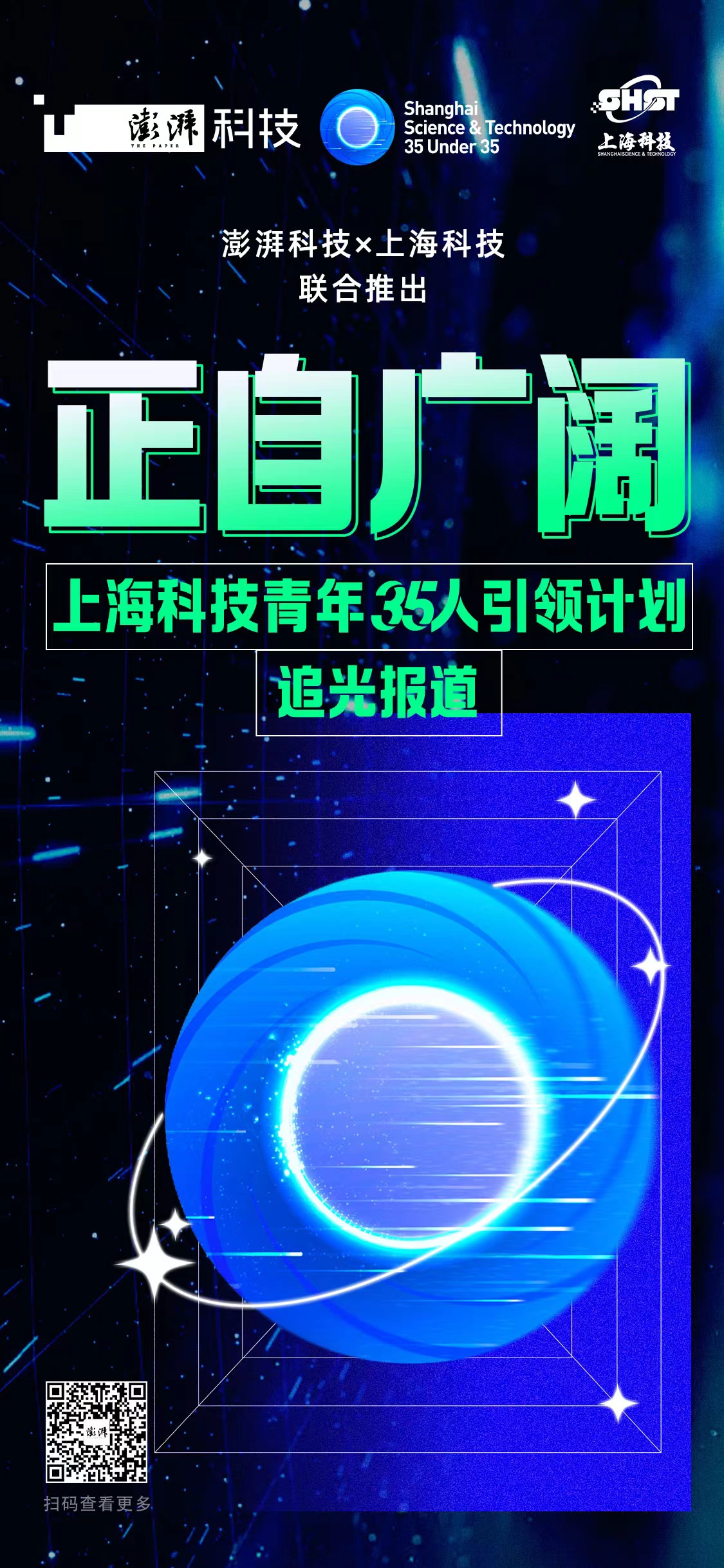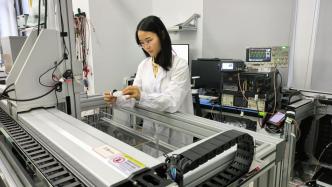
The biggest feature of the acoustic artificial structure is to shrink the original behemoth, and use a device with a size of several centimeters or even smaller to produce the same regulation effect as a natural material device with a size of several meters. "How does an ant trip an elephant? That's an interesting metaphor for the problem that acoustic artificial structures solve."
·For the future development of acoustics, Jiang Xue believes that medical ultrasound and underwater communication are two very important directions, and acoustics has unique and irreplaceable advantages in these two fields.

Image source of Jiang Xue in the laboratory: Photo courtesy of the interviewee
Ultrasound examinations in hospitals, ultrasonic scalpel surgery, deep-sea exploration, underwater communication... These high-tech technologies actually rely on the same basic discipline-acoustics. For example, in the ocean, the attenuation of light waves and radio waves is very serious, and the propagation distance is limited. Sound waves are currently the only form of energy that can travel long distances. In the scene, sound waves become an important signal carrier and technical means.
"The essence of human research on sound waves, that is, acoustics, is to control sound waves to meet various needs in the process of human life and production." Jiang Xue, associate professor of the School of Information Science and Engineering, Fudan University, recently accepted The Paper (www.thepaper.cn) Introduced in the interview.
At present, in the field of acoustics research, an important focus is to explore acoustic artificial structures beyond the acoustic capabilities of natural materials, which is equivalent to creating new acoustic materials. The biggest feature of acoustic artificial structures is that a device with a size of a few centimeters or even smaller can produce the same control effect as a device of tens of meters of natural materials. "How does an ant trip over an elephant? This is an interesting metaphor for solving problems with acoustic artificial structures," Jiang Xue said. "For example, the wavelengths of sound waves commonly used in underwater communications are several meters or tens of meters. It is very difficult to deploy such a behemoth underwater. The use of acoustic artificial structures can solve this problem. ."
As a scientific worker in the field of acoustic artificial structures, Jiang Xue used the special advantages of acoustic artificial structures to solve a number of key technical problems in several major national fields such as acoustic communication and medical ultrasound, and proposed a new type of multi-technology that can improve the efficiency of acoustic communication. It has developed a series of medical ultrasound devices that break through the limits of conventional performance. Due to her outstanding work in this field, Jiang Xue was selected for the second "Shanghai Science and Technology Youth Leading Program" in August this year.
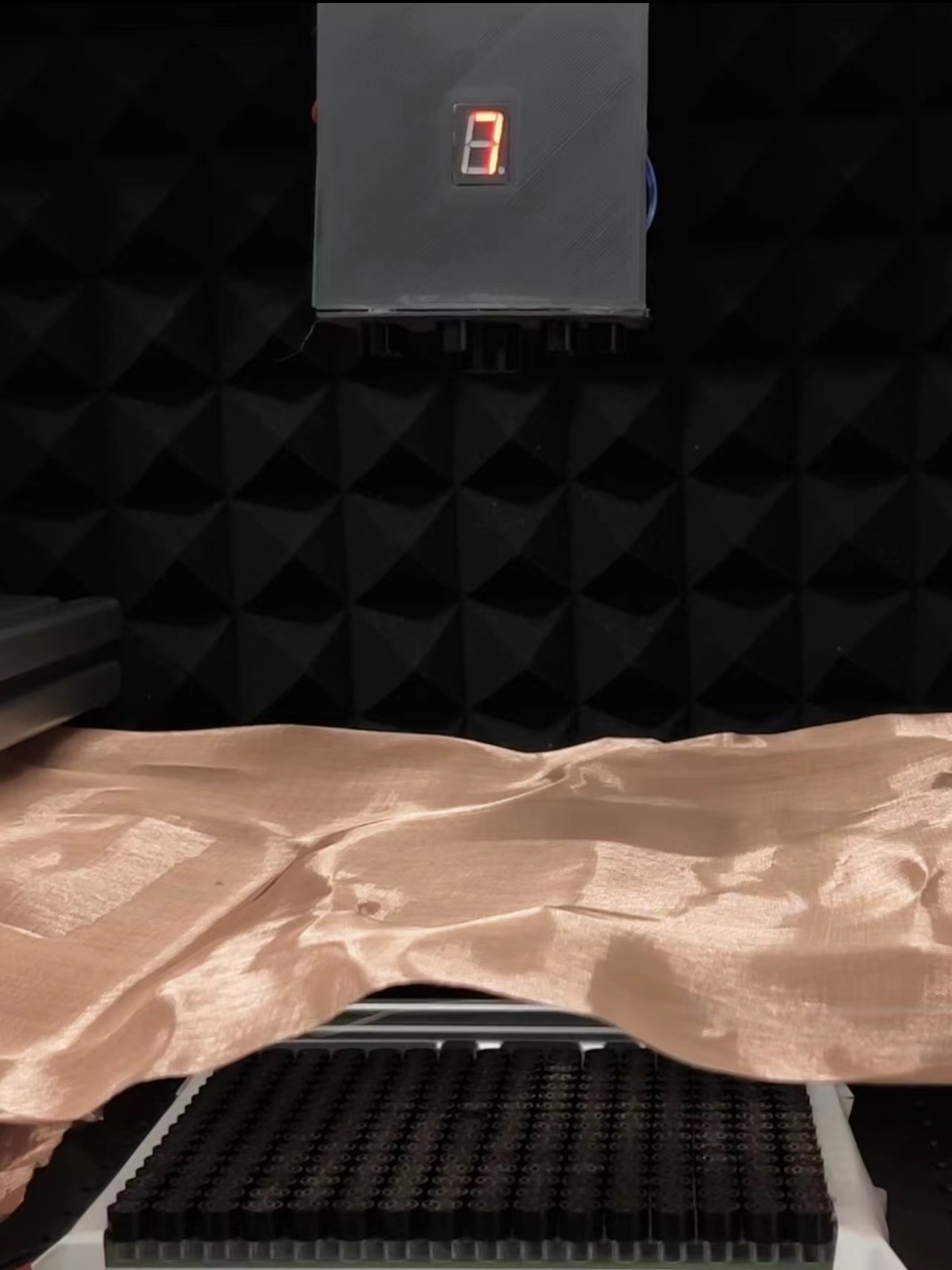
Image source of the ultrasonic wireless control device: Photo courtesy of the interviewee
Find more physical buttons for sonic controls
The regulation of sound waves is the core problem in all important applications of acoustics. Whether it is eliminating noise or controlling waveforms, it is essentially controlling sound waves, guiding them, absorbing, reflecting or scattering them, and manipulating sound waves according to human needs. , "In underwater detection and communication, how to directionally emit sound waves to the target, and then better capture the signal reflected by the target, all need to improve the efficiency and accuracy of detection or communication; in contrast, the target of ultrasonic imaging The essence of achieving higher-resolution tissue imaging is to precisely control the interaction between acoustic waves and biological tissue." Jiang Xue said.
Before the emergence of acoustic artificial structures, the regulation of sound waves by humans was based on natural materials, but natural materials have clear boundaries, and the ability to control sound waves is also quite limited. Acoustic artificial structures can break through the limits of natural materials.
"Achieving the negative refractive index of sound waves is one of the breakthroughs." Jiang Xue said, "We have all seen the pen inserted into the water and it looks like it is bent. This is the phenomenon of light refraction. If there is a medium with negative refractive index , can make the pen look broken. In theory, negative refraction of sound waves can also be achieved, but there are no ready-made materials in nature, we need to develop a material with negative refractive index, which is equivalent to giving sound waves. Regulation opens up new space. In addition, orbital angular momentum also helps us find a whole new dimension of sound wave regulation." Similarly, Jiang Xue hopes to find more physical mechanisms to expand the sound wave manipulation space and solve the field of acoustics Some of the stuck neck problems.
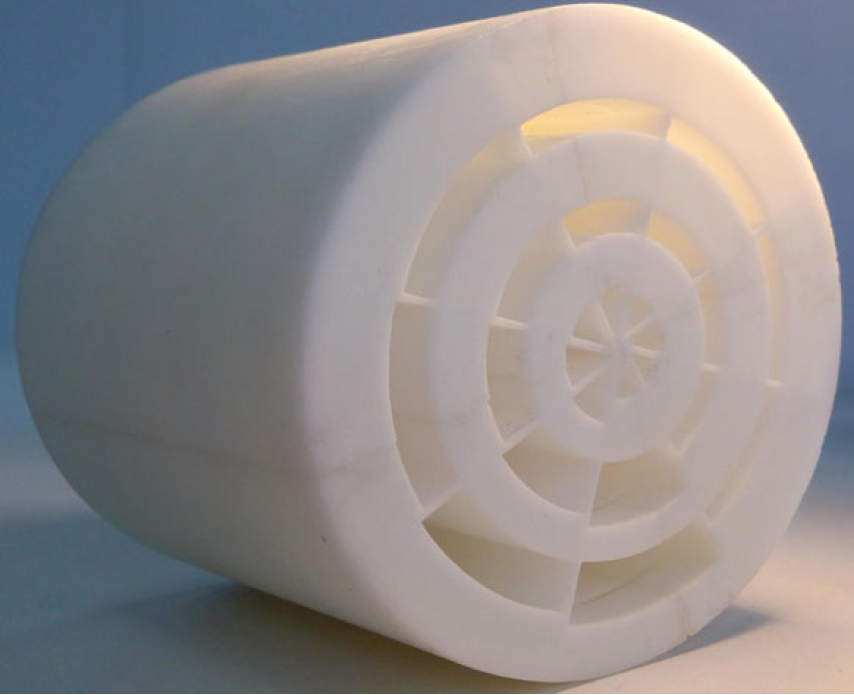
Acoustic orbital angular momentum launch structure Image source: Photo courtesy of the interviewee
At present, the methods of time division multiplexing and frequency division multiplexing are generally used in the method of improving the channel capacity of communication. The main principle is to encode information in carriers of different time periods or different frequency ranges. However, if only one degree of freedom of time or frequency is used, the channel capacity can only be expanded in a limited range, and it is difficult to meet the increasing demand for acoustic communication rates.
How to use the new degrees of freedom independent of the time and frequency domains to further efficiently expand the channel capacity of acoustic signal transmission? Jiang Xue's work is to use the acoustic orbital angular momentum as a new degree of freedom independent of time and frequency, providing a new option for expanding the channel capacity of acoustic communication. The ultimate goal is to develop a new generation of acoustics that are more accurate, efficient and larger. Communication signal transmission.
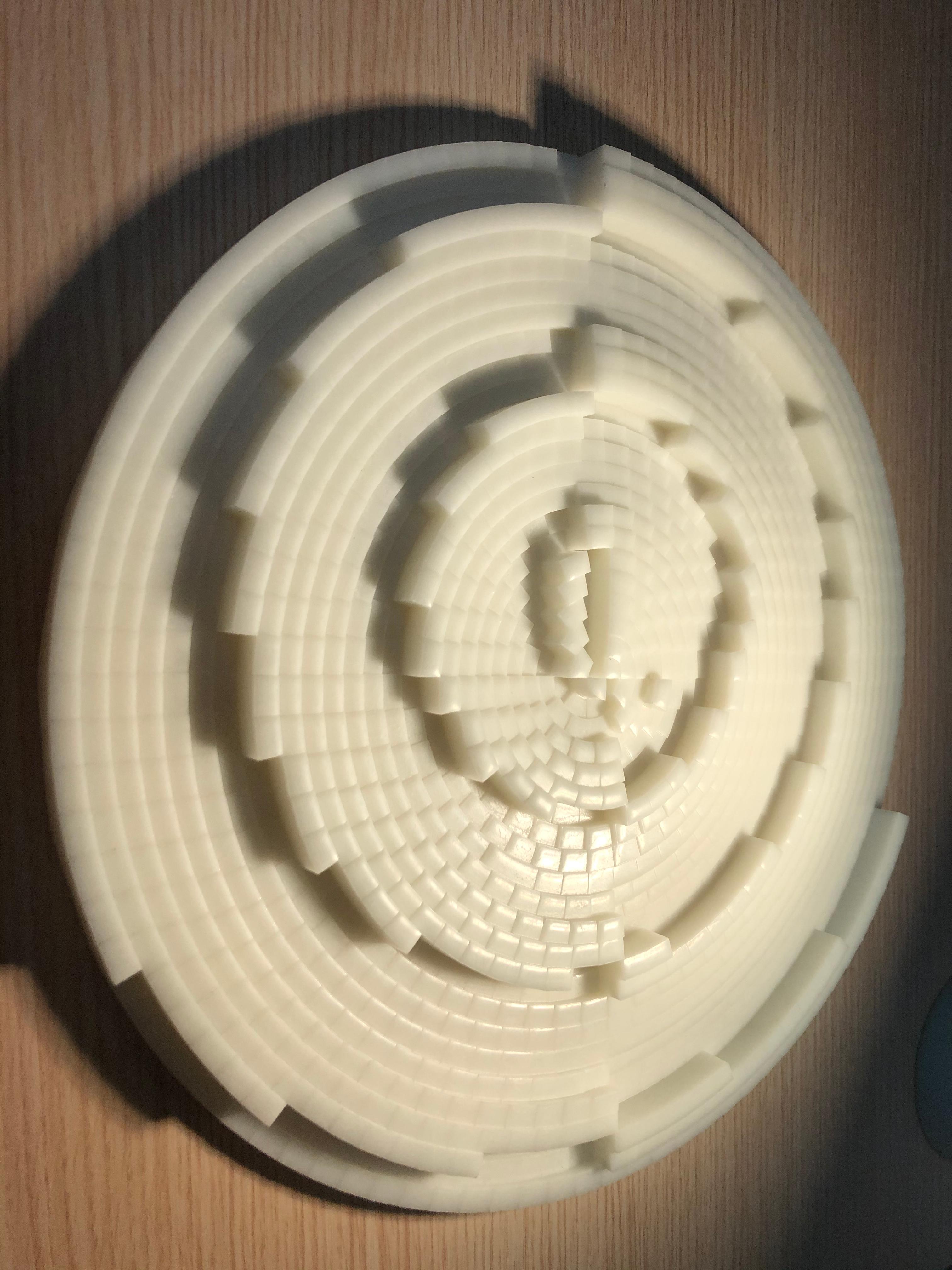
Source of the acoustic orbital angular momentum launch structure: Photo courtesy of the interviewee
"A simple explanation is equivalent to turning a gust of wind into a tornado to achieve a special waveform conversion," Jiang Xue explained, "We proposed a new physical mechanism at that time, that is, using a resonant artificial structure to convert acoustic Resonance is converted into angular momentum, and the result of the conversion is to transform a plane wave without rotation into a vortex wave with acoustic orbital angular momentum after the artificial structure. In the acoustic resonance type metamaterial, an equivalent acoustic wave vector that depends on the angular direction is generated, and the acoustic resonance is converted into the acoustic orbital angular momentum." Based on the innovation of the physical mechanism, Jiang Xue used the orbital angular momentum as a new degree of freedom. To encode the signal, the communication capacity can be increased several times on the basis of the existing communication technology.
Only "persistence" can overcome the hurdle of "confusion in scientific research"
In 2010, Jiang Xue chose the physics major of Nanjing University in the college entrance examination. In a small town, "girl + doing physics" sounded like a combination label that was difficult to be recognized. At that time, Jiang Xue's choice was not unexpectedly opposed by his parents.
"When I was looking through the application guide to look at the professional direction, I found that I didn't know what the very popular direction such as economics and accounting did. So I thought, instead of reading a professional direction that I didn't know what to do, it's better to find a professional direction. I think it’s a good direction.” Jiang Xue said with a smile while recalling, “At that time, it was probably also a newborn calf who was not afraid of tigers, so I thought high school physics was good, so I did physics research.”
The physics of Nanjing University is to some extent the school's ace major, and there are so many masters. After entering university, Jiang Xue discovered for the first time that physics research is completely different from the content in high school physics textbooks. On the other hand, there are so many masters among the classmates, and many of them are already familiar with the university knowledge to be learned. After the final exam of her freshman year, Jiang Xue was a little confused, and even suspected that she might not be the material to study physics.
"But after thinking about it, I felt that I was worthy of my choice by insisting on good physics and professional knowledge." But when she went deep into the study process, she found that once she accepted the subject and identified her own task, , and there is no rejection mentality. "It may also be because it took a lot of time. After understanding it, I will not be afraid psychologically, but enjoy it." When recalling this learning experience, Jiang Xue felt that the most important thing was It is "persistence", and this is also an important quality that will help her become a scientific researcher in the future.
"When I realize that this is a hurdle that must be overcome, I will step over it without hesitation." Jiang Xue said, "The most important thing is to adjust our mentality and methods when encountering setbacks. We must do It is continuous research, and you should focus on long-term goals, not one or two successes or failures in front of you, but you can’t be stumbled by the same pit all the time. When you encounter problems, you can go to others to communicate and learn from others.
After deciding on acoustics as her research direction, Jiang Xue continued to complete a joint doctoral research at Nanjing University and the University of California, Berkeley. At this stage, she participated in the research that proposed a series of novel physical effects such as acoustic Klein tunneling, acoustic orbital angular momentum, and non-Hermitian singularity kinks.
Be the link between medicine and acoustics
Jiang Xue believes that underwater acoustic communication and medical ultrasound are two very important directions of acoustic research, because acoustics has unique and irreplaceable advantages in these two fields.
As far as medical ultrasound is concerned, on the one hand, the penetration depth of ultrasound is relatively deep, and more importantly, there is no electromagnetic radiation, which has unparalleled advantages in the medical field; in the field of underwater communication, because electromagnetic waves or light waves are greatly affected by the ocean. However, sound waves are like a duck to water, "Why is the bottom of the sea dark? Because light cannot penetrate, there is no way to propagate in it, but sound waves cannot. For example, dolphins can communicate smoothly under the sea through sonar. This is because of sound waves. It can spread unimpeded underwater. It is also a major method of human exploration of the ocean now."
In 2019, the postdoctoral fellowship at Hong Kong Baptist University ended, and Jiang Xue joined the Biomedical Engineering Center of Fudan University as a young associate researcher. For Jiang Xue, this is a very important turning point in his academic career. "My research direction has begun to shift from physical acoustics research to applied research on medical ultrasound, and carry out joint research on basic and application."
Jiang Xue's current research mainly considers the use of acoustic artificial structures to achieve better ultrasound imaging and treatment effects. The core concerns of ultrasound imaging are resolution and efficiency. For acoustic waves, because its wavelength is much larger than that of light waves, it is difficult for acoustic waves to achieve the resolution of optical imaging, and it becomes a necessary choice to improve the resolution of acoustic waves.
"I thought of using the acoustic artificial structures in the field of physical acoustics to achieve finer manipulation of sound waves. When there is a better focusing effect, the imaging resolution can be improved," Jiang Xue said. In addition to imaging, the focusing ability of sound waves is also reflected in the tumor cutting of breast and cervical cancer by the ultrasonic knife. The principle is to use ultra-high-intensity focused ultrasound to damage local tumors and local cancer cells with the effect of temperature rise without affecting the normal cells.
She is exploring the road of joint exploration of basic and applied research. Jiang Xue has a deep understanding of the difficulties of applied research. She thinks that the main difficulty lies in how to build an effective communication channel between basic research and applied research disciplines. "In order for basic research results to be implemented in applications, we need to contact experts in practical application scenarios to truly understand the problems they face, not the problems we imagined." Now, Jiang Xue pays more attention to communication with doctors , learn to describe their problems in the language of doctors, convert problems between different fields, and be a translator between the two disciplines of medicine and acoustics.
In addition, in Jiang Xue's view, the application of basic research also requires cross-exploration of different disciplines, such as imaging equipment in medicine, which includes not only acoustic problems, but also software and hardware architecture, material research and development, device preparation, image processing, For complex issues such as clinical test applications, "the comprehensive development and cross-integration of different basic disciplines will truly promote the development of the high-end medical equipment industry."
